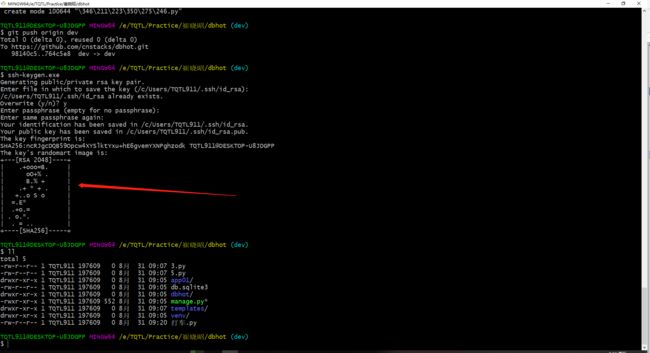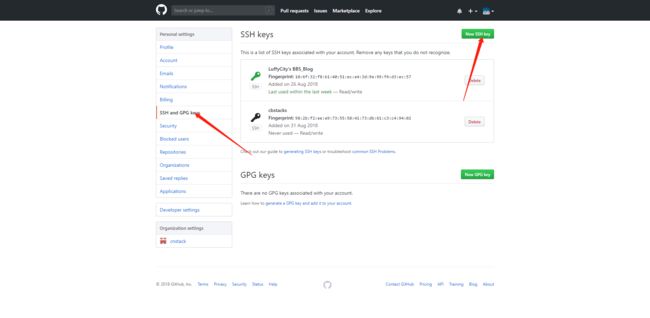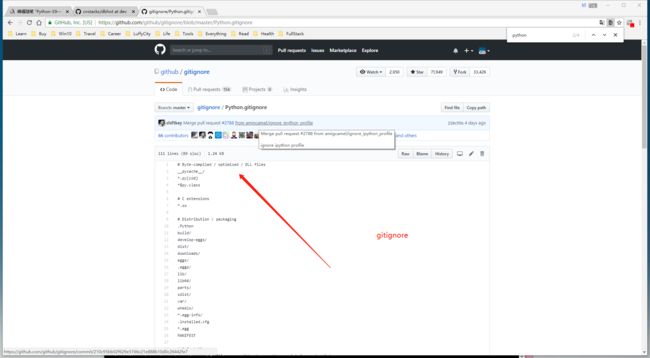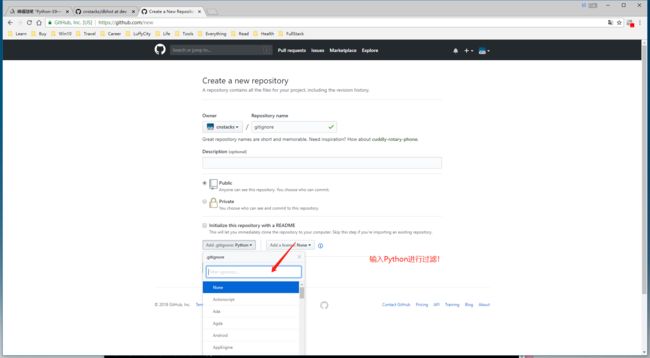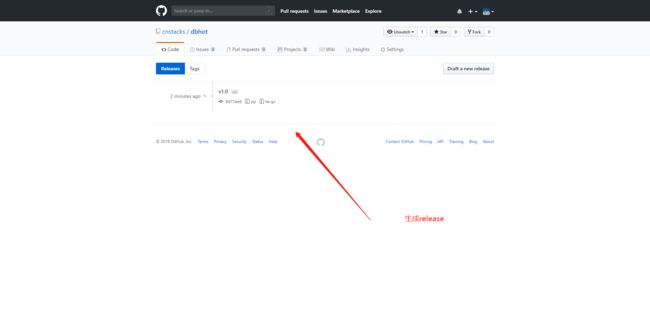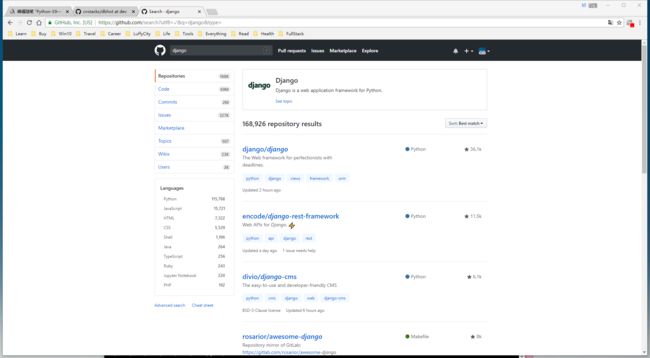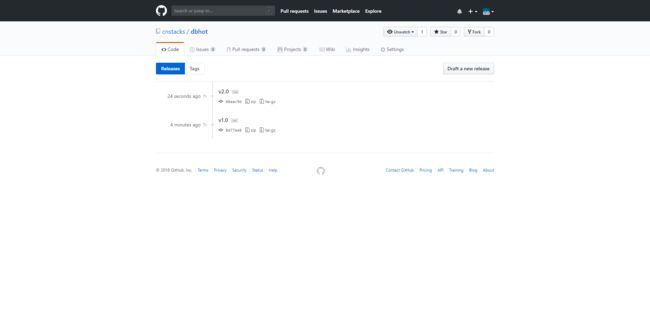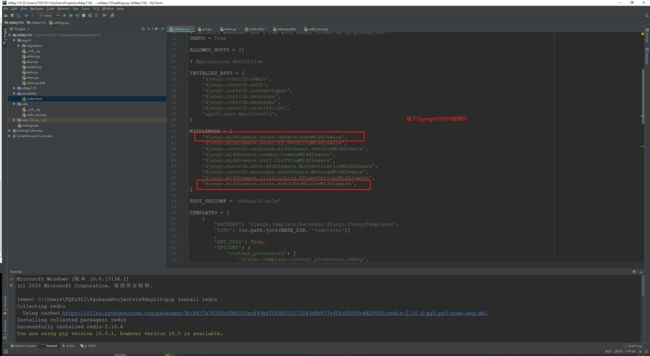-
1 当日内容概要
-
2 内容回顾
-
3 Git版本控制之多人协同开发
-
4 Git版本控制之fork
-
5 版本控制之其他
-
6 Redis之字典基本操作
-
7 Django中操作Redis
-
8 Django缓存
-
9 小补充:Rest Framework访问频率限制
1 当日内容概要
1.1 Git ;
1.2 Redis;
1.3 修改代码;
2 内容回顾
2.1 Git;
2.1.1 Git开发时候,出Bug之后如何解决?
2.1.2 Git rebase的作用?不出现分叉!
2.1.3 Git的操作命令;
- git init
- git add .
- git commit -m "初次提交代码"
- git config --global user.email "[email protected]"
- git config --global user.name "cuxiiaozhao"
- git branch
- git branch dev
- git branch master
- git checkout dev
- git pull origin dev
- git push origin dev
2.1.4 Redis是什么?
- 用于操作计算机内存的软件;
- 可以做数据持久化——AOF、RDB;
- 相当于是一个非常非常大的“字典”;
- Redis是一个单进程、单线程,但是因为数据放在内存中,速度也能保证很快!!!
2.1.5 使用连接池进行连接Redis(以后所有的软件基本都是使用“连接池”的概念);
- 使用连接池——本质是维护一个已经和服务端连接成功的socket,以后再次发送数据时候,直接获取一个socket,然后直接send data;
2.1.6 路飞学城的表结构
- 课程——大类、子类、学位课、奖学金、讲师、专题课、课程详细、大纲、作业、章节、课时、价格策略;
- 深科技——文章来源、文章、用户、token、评论、收藏;
2.1.7 支付宝支付
- 加密方式:rsa;
- 公钥私钥——商户私钥、支付宝公钥;
- 订单提交成功后,服务器断电宕机,成功:return HttpResponse('success');
2.1.8 Rest Framework 框架
2.1.9 数据库特点?
- 分页为什么越往后翻页越慢——限制页数、记录当前页的最大ID、最小ID;
- 错误答案——扫描索引表、再去数据库中获取数据;
2.1.10 缓存数据库Redis
3 Git版本控制之多人协同开发
3.1 多人协同开发;
3.1.1 允许他人操作程序代码——合作者、创建组织organization;
3.1.2 工作中常用到的分支——master、dev、cuixiaozhao、lijingping
3.1.3 协同开发的时候,规则——小组协同在一起进行合并;合并时间建议1~2天合并一下,最好一天合并一次;
3.1.4 问题:先拉取代码,再提交代码;
TQTL911@DESKTOP-U8JDGPP MINGW64 /e/TQTL/Practice/三里屯/dbhot (dev) $ git push origin dev To https://github.com/tqtl911/dbhot.git ! [rejected] dev -> dev (fetch first) error: failed to push some refs to 'https://github.com/tqtl911/dbhot.git' hint: Updates were rejected because the remote contains work that you do hint: not have locally. This is usually caused by another repository pushing hint: to the same ref. You may want to first integrate the remote changes hint: (e.g., 'git pull ...') before pushing again. hint: See the 'Note about fast-forwards' in 'git push --help' for details.
3.1.5 对代码进行Review;
-
Who Do it?开发组长,技术导师;
- How Do it?创建Review分支;
4 Git版本控制之fork(如何提升自己)
4.1 找优秀的代码下载下来,“读源码”;
4.2 几个人做一个通用性的ORM;
4.3 接个人一起做一个开源项目并发布于Github;
4.4 发现著名开源项目的Bug,比如Django、Flask并给出修复建议;
4.5 Fork他人的项目;
5 版本控制之其他
5.1 给别人的代码贡献力量,比如Github如何做?先fork,再pull request;
5.2 其他;
5.2.1 pull或者push需要每次输入用户名和密码;
5.2.2 无需反复输入用户名和密码;
- git remote add origin https://用户名:密码@github.com/cnstack/Tyrion.git(不推荐)
- Use SSh:[email protected]:cnstack/Tyrion.git(推荐基于公钥私钥的方法)
5.3 .gitignore文件的引入,忽略不需要提交的文件;
https://github.com/github/gitignore/blob/master/Python.gitignore
5.4 创建项目的时候,指定忽略类型;
# Byte-compiled / optimized / DLL files __pycache__/ *.py[cod] *$py.class # C extensions *.so # Distribution / packaging .Python build/ develop-eggs/ dist/ downloads/ eggs/ .eggs/ lib/ lib64/ parts/ sdist/ var/ wheels/ *.egg-info/ .installed.cfg *.egg MANIFEST # PyInstaller # Usually these files are written by a python script from a template # before PyInstaller builds the exe, so as to inject date/other infos into it. *.manifest *.spec # Installer logs pip-log.txt pip-delete-this-directory.txt # Unit test / coverage reports htmlcov/ .tox/ .coverage .coverage.* .cache nosetests.xml coverage.xml *.cover .hypothesis/ .pytest_cache/ # Translations *.mo *.pot # Django stuff: *.log local_settings.py db.sqlite3 # Flask stuff: instance/ .webassets-cache # Scrapy stuff: .scrapy # Sphinx documentation docs/_build/ # PyBuilder target/ # Jupyter Notebook .ipynb_checkpoints # pyenv .python-version # celery beat schedule file celerybeat-schedule # SageMath parsed files *.sage.py # Environments .env .venv env/ venv/ ENV/ env.bak/ venv.bak/ # Spyder project settings .spyderproject .spyproject # Rope project settings .ropeproject # mkdocs documentation /site # mypy .mypy_cache/
5.5 项目版本release的引入;
5.5.1 git tag -a v1.0 -m "初次创建第一个版本";
5.5.2 git push origin --tags;
5.5.3 练习要求;
- 创建项目;
- 邀请成员参与github
- 各自创建以个人姓名命名的项目分支;
- 修改代码,进行提交;
- 分享项目的URL地址;
TQTL911@DESKTOP-U8JDGPP MINGW64 /e/TQTL/Practice/崔晓昭/dbhot (dev) $ git push origin --tags Enumerating objects: 1, done. Counting objects: 100% (1/1), done. Writing objects: 100% (1/1), 187 bytes | 187.00 KiB/s, done. Total 1 (delta 0), reused 0 (delta 0) To https://github.com/cnstacks/dbhot.git * [new tag] v1.0 -> v1.0 TQTL911@DESKTOP-U8JDGPP MINGW64 /e/TQTL/Practice/崔晓昭/dbhot (dev)
6 Redis之字典基本操作
6.1 Redis的特点:a.持久化;b.单线程、单进程;c.5大数据类型;
redis = { k1:'123',字符串 k2:[1,2,3,4,5,6,7],列表 k3:{1,2,3,4},集合 k4:{name :123,age:26},字典 k5:{('alex',60),('eva-j',80),('rt',70),},有序集合 }
6.2 使用字典:
6.2.1 字典的基本操作;
6.2.2 慎重使用hgetall,优先使用hscan_iter
6.2.3 注意事项:不支持字典列表的多层级嵌套,仅支持第一层;
s2.py;
#!/usr/bin/env python3 # -*- coding:utf-8 -*- # __Author__:TQTL911 # Version:python3.6.6 # Time:2018/8/30 22:57 import redis pool = redis.ConnectionPool(host='47.95.121.154', port=6379, password='Ab123456.', max_connections=1000) conn = redis.Redis(connection_pool=pool) conn.set('foo', 'Bar') # 字典的操作; ''' redis = { k4:{ username:alex, age:18 } } ''' # conn.hset('k4', 'username', 'alex') # conn.hset('k4', 'age', '18') val = conn.hget('k4', 'username') print(val) # b'alex' vals = conn.hgetall('k4') print(vals) # {b'username': b'alex', b'age': b'18'} # Redis中的计数器; print(conn.hget('k4', 'age')) # conn.hincrby('k4','age',amount=1) conn.hincrby('k4', 'age', amount=-1) print(conn.hget('k4', 'age')) ''' b'18' b'19' ''' # 如果Redis的k4对应的字典中,有1000w的数据,请打印所有数据; # 方法1:从Redis拿到数据之后,服务器内存无法承受,爆栈! result = conn.hgetall('k4') # print(result) # {b'username': b'alex', b'age': b'19'} # 方法2:慎重使用hgetall方法; ret = conn.hscan_iter('k4', count=100) for item in ret: print(item)
7 Django中操作Redis
7.1 Redis的应用
7.2 Django中使用Redis;
7.2.1 自定义redis连接池;
views.py.bak
from django.shortcuts import render,HttpResponse import redis from utils.redis_pool import POOL # Create your views here. def index(request): conn = redis.Redis(connection_pool=POOL) # 设置值; conn.hset('kkk', 'age',18) return HttpResponse('设置成功') def order(request): conn = redis.Redis(connection_pool=POOL) conn.hget('kkk','age') return HttpResponse('获取成功')
utils/redis_pool.py;
#!/usr/bin/env python3 # -*- coding:utf-8 -*- # __Author__:TQTL911 # Version:python3.6.6 # Time:2018/8/31 11:47 import redis # 创建连接池(单例模式); import redis POOL = redis.ConnectionPool(host='47.205.221.154', port=6379, password='Ab123456.', max_connections=1000)
7.2.2 使用第三方组件,如Django中的pip3 install django-redis;
Microsoft Windows [版本 10.0.17134.1] (c) 2018 Microsoft Corporation。保留所有权利。 (venv) C:\Users\TQTL911\PycharmProjects\s9day110>pip install redis Collecting redis Using cached https://files.pythonhosted.org/packages/3b/f6/7a76333cf0b9251ecf49efff635015171843d9b977e4ffcf59f9c4428052/redis-2.10.6-py2.py3-none-any.whl Installing collected packages: redis Successfully installed redis-2.10.6 You are using pip version 10.0.1, however version 18.0 is available. You should consider upgrading via the 'python -m pip install --upgrade pip' command. (venv) C:\Users\TQTL911\PycharmProjects\s9day110>pip install django-redis Collecting django-redis Downloading https://files.pythonhosted.org/packages/d5/3c/184b7a962f2aa5e49388ced9664a308b8d1b9864dc6afe7adb2a8302b5c4/django_redis-4.9.0-py2.py3-none-any.whl You should consider upgrading via the 'python -m pip install --upgrade pip' command. (venv) C:\Users\TQTL911\PycharmProjects\s9day110>pip install django-redis Collecting django-redis Downloading https://files.pythonhosted.org/packages/d5/3c/184b7a962f2aa5e49388ced9664a308b8d1b9864dc6afe7adb2a8302b5c4/django_redis-4.9.0-py2.py3-none -any.whl Requirement already satisfied: redis>=2.10.0 in c:\users\tqtl911\pycharmprojects\s9day110\venv\lib\site-packages (from django-redis) (2.10.6) Requirement already satisfied: Django>=1.11 in c:\users\tqtl911\pycharmprojects\s9day110\venv\lib\site-packages (from django-redis) (2.1) Requirement already satisfied: pytz in c:\users\tqtl911\pycharmprojects\s9day110\venv\lib\site-packages (from Django>=1.11->django-redis) (2018.5) Installing collected packages: django-redis Successfully installed django-redis-4.9.0 You are using pip version 10.0.1, however version 18.0 is available. You should consider upgrading via the 'python -m pip install --upgrade pip' command. (venv) C:\Users\TQTL911\PycharmProjects\s9day110>
7.2.3 settings.py中的redis相关配置(default、back);
""" Django settings for s9day110 project. Generated by 'django-admin startproject' using Django 2.1. For more information on this file, see https://docs.djangoproject.com/en/2.1/topics/settings/ For the full list of settings and their values, see https://docs.djangoproject.com/en/2.1/ref/settings/ """ import os # Build paths inside the project like this: os.path.join(BASE_DIR, ...) BASE_DIR = os.path.dirname(os.path.dirname(os.path.abspath(__file__))) # Quick-start development settings - unsuitable for production # See https://docs.djangoproject.com/en/2.1/howto/deployment/checklist/ # SECURITY WARNING: keep the secret key used in production secret! SECRET_KEY = ')jv_quydi65b@$3rl^$wsu94g^&vuxsjgpylpui_=js4-o^ni$' # SECURITY WARNING: don't run with debug turned on in production! DEBUG = True ALLOWED_HOSTS = [] # Application definition INSTALLED_APPS = [ 'django.contrib.admin', 'django.contrib.auth', 'django.contrib.contenttypes', 'django.contrib.sessions', 'django.contrib.messages', 'django.contrib.staticfiles', 'app01.apps.App01Config', ] MIDDLEWARE = [ 'django.middleware.security.SecurityMiddleware', 'django.contrib.sessions.middleware.SessionMiddleware', 'django.middleware.common.CommonMiddleware', 'django.middleware.csrf.CsrfViewMiddleware', 'django.contrib.auth.middleware.AuthenticationMiddleware', 'django.contrib.messages.middleware.MessageMiddleware', 'django.middleware.clickjacking.XFrameOptionsMiddleware', ] ROOT_URLCONF = 's9day110.urls' TEMPLATES = [ { 'BACKEND': 'django.template.backends.django.DjangoTemplates', 'DIRS': [os.path.join(BASE_DIR, 'templates')] , 'APP_DIRS': True, 'OPTIONS': { 'context_processors': [ 'django.template.context_processors.debug', 'django.template.context_processors.request', 'django.contrib.auth.context_processors.auth', 'django.contrib.messages.context_processors.messages', ], }, }, ] WSGI_APPLICATION = 's9day110.wsgi.application' # Database # https://docs.djangoproject.com/en/2.1/ref/settings/#databases DATABASES = { 'default': { 'ENGINE': 'django.db.backends.sqlite3', 'NAME': os.path.join(BASE_DIR, 'db.sqlite3'), } } # Password validation # https://docs.djangoproject.com/en/2.1/ref/settings/#auth-password-validators AUTH_PASSWORD_VALIDATORS = [ { 'NAME': 'django.contrib.auth.password_validation.UserAttributeSimilarityValidator', }, { 'NAME': 'django.contrib.auth.password_validation.MinimumLengthValidator', }, { 'NAME': 'django.contrib.auth.password_validation.CommonPasswordValidator', }, { 'NAME': 'django.contrib.auth.password_validation.NumericPasswordValidator', }, ] # Internationalization # https://docs.djangoproject.com/en/2.1/topics/i18n/ LANGUAGE_CODE = 'en-us' TIME_ZONE = 'UTC' USE_I18N = True USE_L10N = True USE_TZ = True # Static files (CSS, JavaScript, Images) # https://docs.djangoproject.com/en/2.1/howto/static-files/ STATIC_URL = '/static/' # Redis配置; CACHES = { "default": { "BACKEND": "django_redis.cache.RedisCache", "LOCATION": "redis://127.0.0.1:6379", "OPTIONS": { "CLIENT_CLASS": "django_redis.client.DefaultClient", "CONNECTION_POOL_KWARGS": {"max_connections": 1000} # "PASSWORD":"密码", } }, "back": { "BACKEND": "django_redis.cache.RedisCache", "LOCATION": "redis://127.0.0.1:6379", "OPTIONS": { "CLIENT_CLASS": "django_redis.client.DefaultClient", "CONNECTION_POOL_KWARGS": {"max_connections": 1000} # "PASSWORD":"密码", } }, }
7.2.4 django-redis的使用方法;
views.py;
import redis from django.shortcuts import render, HttpResponse from django_redis import get_redis_connection # Create your views here. def index(request): conn = get_redis_connection("default") return HttpResponse('设置成功') def order(request): conn = get_redis_connection("back") return HttpResponse('获取成功')
8 Django缓存
8.1 让程序加上全站缓存;
8.2 全站缓存;
8.3 单视图缓存(基于装饰器做)from django.views.decorators.cache import cache_page;
import redis from django.shortcuts import render, HttpResponse from django_redis import get_redis_connection import time from django.views.decorators.cache import cache_page # Create your views here. @cache_page(60 * 15) def index(request): ctime = str(time.time()) return HttpResponse(ctime) def order(request): return render(request, 'order.html')
8.4 局部页面做缓存;
DOCTYPE html>
<html lang="en">
<head>
<meta charset="UTF-8">
<title>ordertitle>
<style type="text/css">
style>
head>
<body>
<h1>cuixiaozhaoh1>
<div>
cuixiaoshan
div>
{% cache 10 cuixiaosi %}
<di>
cuixiaolei
di>
{% endcache %}
body>
html>
8.5 Redis的同类软件Memcache(不支持持久化),但是没有Redis优秀;
settings.py;
""" Django settings for s9day110 project. Generated by 'django-admin startproject' using Django 2.1. For more information on this file, see https://docs.djangoproject.com/en/2.1/topics/settings/ For the full list of settings and their values, see https://docs.djangoproject.com/en/2.1/ref/settings/ """ import os # Build paths inside the project like this: os.path.join(BASE_DIR, ...) BASE_DIR = os.path.dirname(os.path.dirname(os.path.abspath(__file__))) # Quick-start development settings - unsuitable for production # See https://docs.djangoproject.com/en/2.1/howto/deployment/checklist/ # SECURITY WARNING: keep the secret key used in production secret! SECRET_KEY = ')jv_quydi65b@$3rl^$wsu94g^&vuxsjgpylpui_=js4-o^ni$' # SECURITY WARNING: don't run with debug turned on in production! DEBUG = True ALLOWED_HOSTS = [] # Application definition INSTALLED_APPS = [ 'django.contrib.admin', 'django.contrib.auth', 'django.contrib.contenttypes', 'django.contrib.sessions', 'django.contrib.messages', 'django.contrib.staticfiles', 'app01.apps.App01Config', ] MIDDLEWARE = [ 'django.middleware.cache.UpdateCacheMiddleware', 'django.middleware.security.SecurityMiddleware', 'django.contrib.sessions.middleware.SessionMiddleware', 'django.middleware.common.CommonMiddleware', 'django.middleware.csrf.CsrfViewMiddleware', 'django.contrib.auth.middleware.AuthenticationMiddleware', 'django.contrib.messages.middleware.MessageMiddleware', 'django.middleware.clickjacking.XFrameOptionsMiddleware', 'django.middleware.cache.FetchFromCacheMiddleware', ] ROOT_URLCONF = 's9day110.urls' TEMPLATES = [ { 'BACKEND': 'django.template.backends.django.DjangoTemplates', 'DIRS': [os.path.join(BASE_DIR, 'templates')] , 'APP_DIRS': True, 'OPTIONS': { 'context_processors': [ 'django.template.context_processors.debug', 'django.template.context_processors.request', 'django.contrib.auth.context_processors.auth', 'django.contrib.messages.context_processors.messages', ], }, }, ] WSGI_APPLICATION = 's9day110.wsgi.application' # Database # https://docs.djangoproject.com/en/2.1/ref/settings/#databases DATABASES = { 'default': { 'ENGINE': 'django.db.backends.sqlite3', 'NAME': os.path.join(BASE_DIR, 'db.sqlite3'), } } # Password validation # https://docs.djangoproject.com/en/2.1/ref/settings/#auth-password-validators AUTH_PASSWORD_VALIDATORS = [ { 'NAME': 'django.contrib.auth.password_validation.UserAttributeSimilarityValidator', }, { 'NAME': 'django.contrib.auth.password_validation.MinimumLengthValidator', }, { 'NAME': 'django.contrib.auth.password_validation.CommonPasswordValidator', }, { 'NAME': 'django.contrib.auth.password_validation.NumericPasswordValidator', }, ] # Internationalization # https://docs.djangoproject.com/en/2.1/topics/i18n/ LANGUAGE_CODE = 'en-us' TIME_ZONE = 'UTC' USE_I18N = True USE_L10N = True USE_TZ = True # Static files (CSS, JavaScript, Images) # https://docs.djangoproject.com/en/2.1/howto/static-files/ STATIC_URL = '/static/' # Redis配置; CACHES = { "default": { "BACKEND": "django_redis.cache.RedisCache", "LOCATION": "redis://127.0.0.1:6379", "OPTIONS": { "CLIENT_CLASS": "django_redis.client.DefaultClient", "CONNECTION_POOL_KWARGS": {"max_connections": 1000} # "PASSWORD":"密码", } }, "back": { "BACKEND": "django_redis.cache.RedisCache", "LOCATION": "redis://127.0.0.1:6379", "OPTIONS": { "CLIENT_CLASS": "django_redis.client.DefaultClient", "CONNECTION_POOL_KWARGS": {"max_connections": 1000} # "PASSWORD":"密码", } }, } # 自定义的文件缓存; # CACHES = { # 'default': { # 'BACKEND': 'django.core.cache.backends.filebased.FileBasedCache', # 'LOCATION': '/var/tmp/django_cache', # } # } # 基于Memcache做缓存; # CACHES = { # 'default': { # 'BACKEND': 'django.core.cache.backends.memcached.MemcachedCache', # 'LOCATION': '127.0.0.1:11211', # } # }


